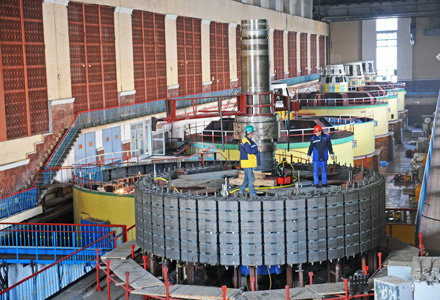Introduction
EPC, standing for Engineering – Procurement – Construction, is a widely used term, but not always correctly. And these three words do not necessarily make us a lot wiser. The “EPC question” is about establishing when a contract should best use the EPC type, or not. Sometimes, after launching an EPC tender, Employers (especially state-owned companies), can already get in trouble during the evaluation process.
EPC word analysis
Let us analyse the words that make up the EPC term:
- Engineering: The EPC Contractor is providing himself the engineering for the project. In most projects, the Employer determines how the project should be build or made by providing a conceptual/basic design (transformed into a detailed specification). Not so in an EPC. That’s a very important point from which all the particularities of the “EPC question” are derived.
- Procurement: Based on the EPC Contractor’s design, the Contractor continues with the works by procuring the materials and equipment.
- Construction: In the continuation of the procurement, the EPC Contractor constructs the project and installs the equipment to build a project “fit for its purpose”. EPC is therefore fundamentally different from an EPCM contract (EPCM = “Engineering, Procurement and Construction Management”). In the latter, the EPCM contractor provides management services for the project but doesn’t actually build the project.
Employer – EPC Contractor relationship
The relationship between Employer [or Owner] and Contractor, when an EPC Contract is correctly established, should be based on the following:
- The Employer only issues a functional specification, giving the general expectations of the outcomes of the Contract (notion of “fitness for purpose”) with precise performance guarantees and liquidated damages/buy-outs for any shortfall.
- The Employer awards substantially-the-whole-works to a single contractor who will do the job of integrating all the required supplies and trades in order to complete the works.
- The Contractor collects his own information on how to execute the works. Any information provided by the Employer is “for information only” except for very limited baseline/reliance data. For more details on the concept of reliance data, click here.
- The engineering for the project (including the conceptual design) is done by the Contractor. The Employer [and often the Lenders for a “Project Finance”] have an Employer’s Engineer whose role is quite limited to reviewing the progress of works for payment milestones and reviewing, rather than approving, intermediate design information.
- The Contractor has the possibility to optimize the project as long as the results are in compliance with the functional specifications and they achieve the performance guarantees. For more information about the freedom to optimize in an EPC Contract, click here.
- The Contractor is bearing most of the risks during the construction phase, except for specifically identified Employer’s Risks : unforeseeable/non-insurable risks, war risk, geological risk beyond a geological baseline etc.
- A specific allocation of the permitting responsibility is set-up between the Employer and the Contractor with the latter being responsible for building permits.
EPC, or not, in FIDIC
Within FIDIC contracts, we find this difference between EPC and Design-Build contracts between the Silver and Yellow Book, respectively:

Yellow Book
The Contractor designs and provides the works in accordance with the Employer’s requirements. The administration of the project and supervision of the works is carried out by an Engineer who is employed by the Employer.
Silver Book

There is no more Engineer (in the spirit used in the Yellow Book; however, often, you still have an Owner’s and or Lender’s Engineer with limited influence as mentioned earlier). The Contractor now takes the full responsibility for the design and execution of the project (with few exceptions). The Contractor has the freedom to carry out the work in his chosen manner, provided the end result meets the performance criteria specified by the Employer. The Employer should only exercise limited control over the Contractor’s work.
Conclusion
Before choosing an EPC Contract set-up for their Request for Quotations, Employers should question themselves (or seek external support to do so) to see if it suits them in terms of follow-up of the works, freedom given to the contractor, ability to compare different bids, ability to establish the performance requirements etc.
EPC Contracts are a very efficient way to execute complex projects if both the Employer and the Contractor can live up to the expectations.
For other articles on EPC on this blog, click here.
AfiTAC.com is the blog on commercial and contractual subjects for the Project Businesses (Construction, Infrastructure, Oil & Gas, Power & Renewable, Water Supply & Sanitation, etc). Its objective is to stimulate reflection, learning, convergence to balanced contracts and positive dispute resolution. You can subscribe to our newsletter by writing to “newsletter@afitac.com”. You can also connect to our LinkedIn page. Engagement with the readers is what keeps us going. So, don’t hesitate to exchange with us by commenting here below, liking our publication on LinkedIn and writing to us “info@afitac.com”.



4 Comments
Anonymous · 7 January 2018 at 12 h 41 min
Indeed, in my experience, EPC contracts often have long negotiation periods because, both the Employer and the Contractor, try to shift too much risks to one another.
Contract Risk Score for Customer, Contract, Price & Payment - AfiTaC · 21 January 2019 at 18 h 49 min
[…] most risks to the Contractor, using mostly the EPC type of […]
EPC and the freedom to optimize - AfiTaC.com · 18 February 2019 at 19 h 53 min
[…] In a previous post, we have talked about “EPC or not EPC, that’s the question”. […]
EPC tender evaluation, one stage or two stage bidding - AfiTaC.com · 1 May 2019 at 20 h 32 min
[…] “EPC or not EPC, that’s the question” […]